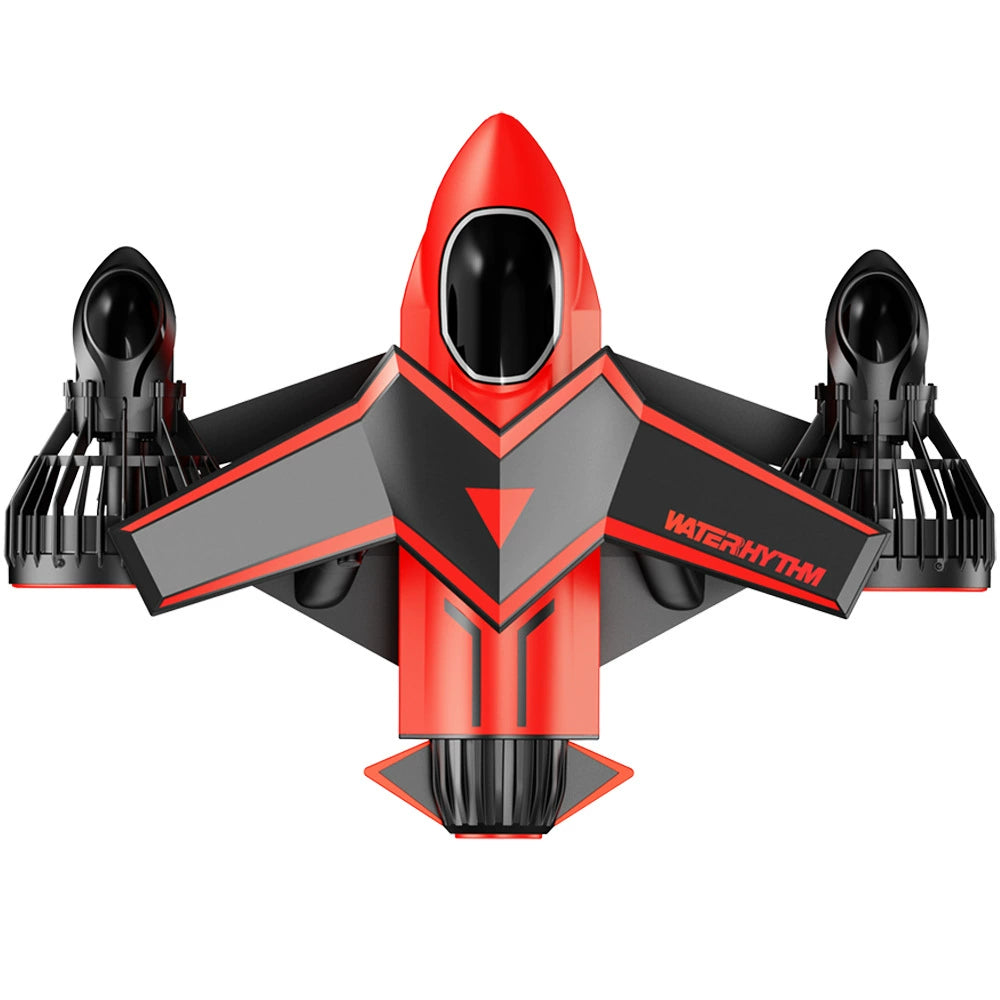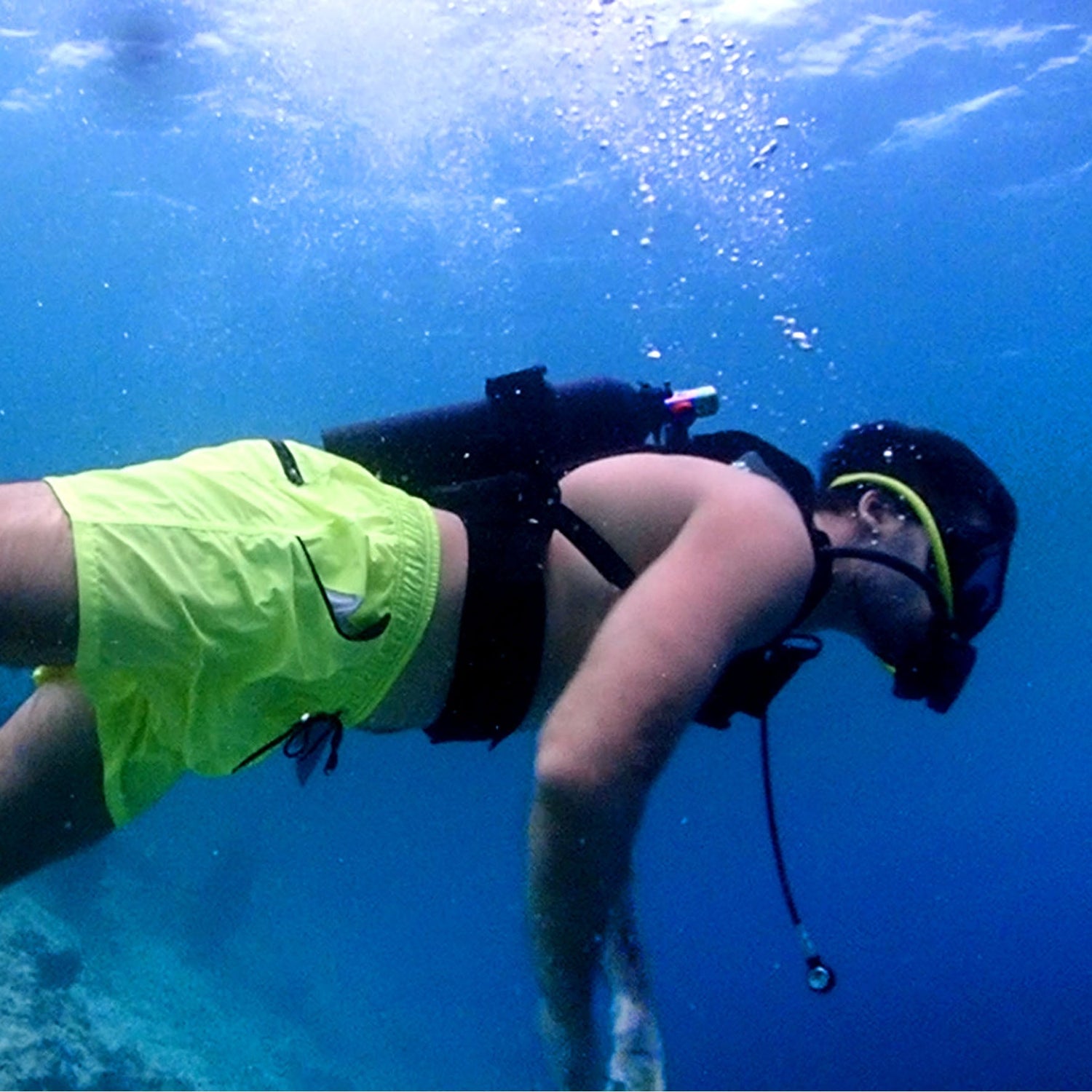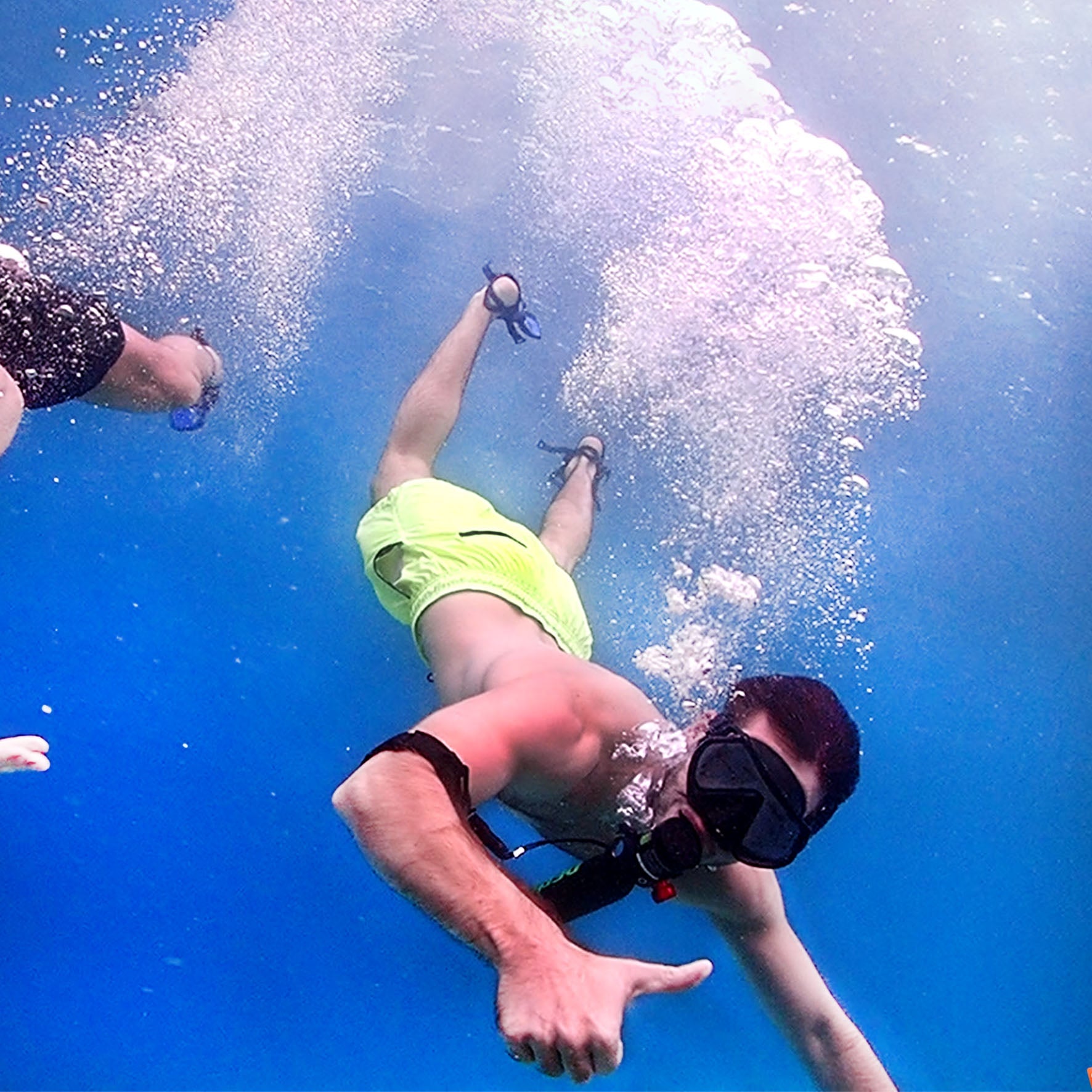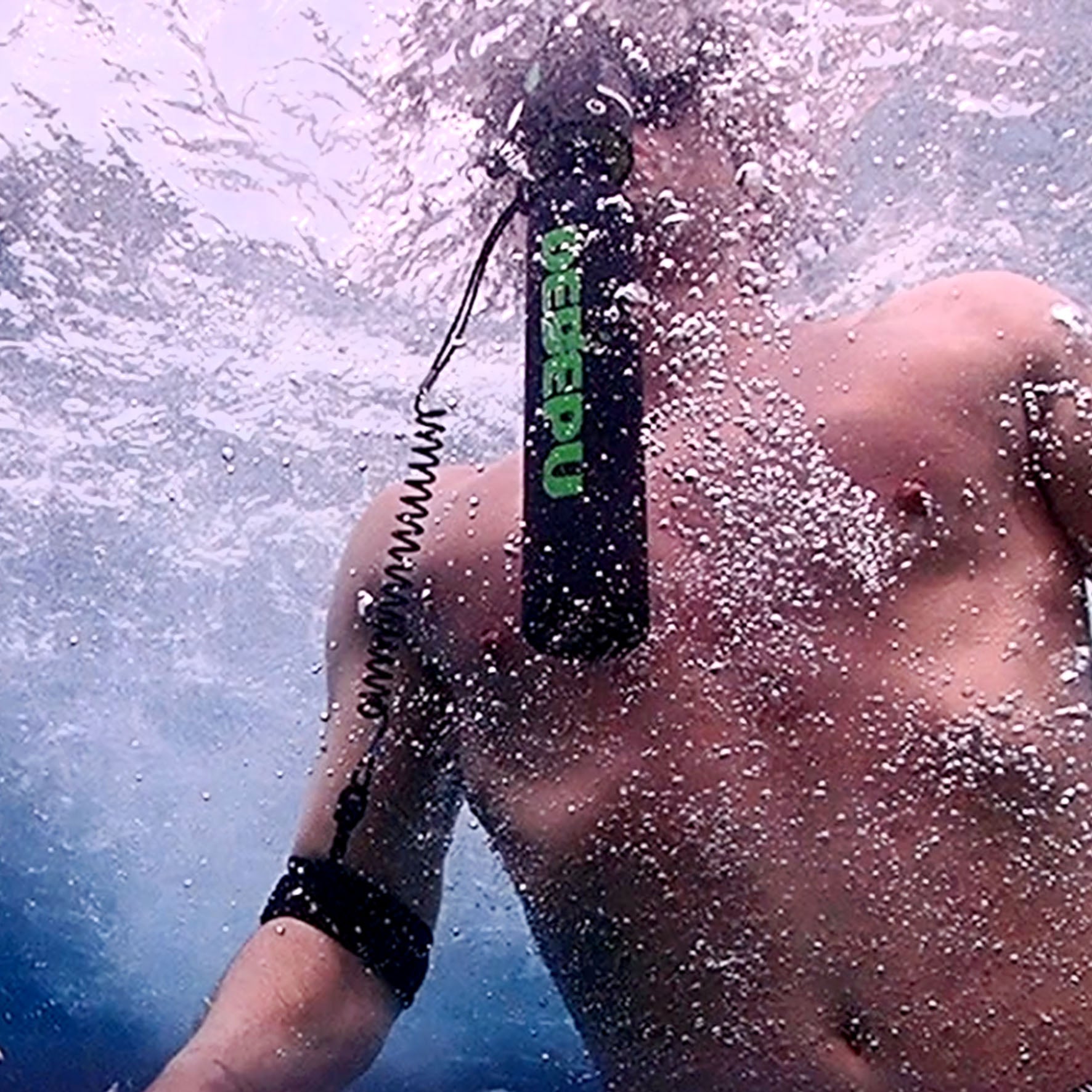Snorkeling lets you explore underwater worlds, but 75% of beginners struggle with gear issues in their first try. A well-fitted mask should seal for 3-5 seconds when pressed to your face, while dry snorkels reduce water intake by 90% compared to basic models. Proper breathing—3-second inhales, 4-second exhales—boosts endurance by 40%, and rinsing gear after each use extends its life by 2-3 years.
Picking the Right Mask and Snorkel
About 40% of first-time snorkelers report leaks or discomfort due to the wrong size or fit. The average snorkel mask lasts 2-5 years with proper care, but choosing the right one depends on face shape, strap tension, and lens type. A well-sealed mask should stick to your face for 3-5 seconds when pressed without the strap, indicating a proper seal. Snorkels come in dry, semi-dry, and traditional styles, with dry snorkels reducing water intake by 90% compared to open-top designs. Prices range from 20 for basic sets to 150+ for premium anti-fog, tempered glass masks.
1. Mask Fit & Seal Test
Face shape matters: Masks come in small (for kids/juniors), medium (most adults), and large (wider faces).
Test the seal: Press the mask to your face (no strap) and inhale slightly. If it stays for 3+ seconds, the fit is good.
Strap tension: Over-tightening causes leaks—adjust so it’s snug but not painful. 60-70% of leaks come from incorrect strap pressure.
2. Lens Type & Visibility
Single vs. dual lenses: Single lenses offer 180° visibility, while dual lenses reduce fogging by 30% due to separate air pockets.
Tempered glass vs. plastic: Tempered glass resists scratches 5x longer and is standard in masks $50+.
3. Snorkel Choice (Dry vs. Semi-Dry vs. Traditional)
Dry snorkels (with a float valve) block 95% of water—best for beginners.
Semi-dry snorkels reduce splash intake by 70% but require occasional clearing.
Traditional snorkels are cheapest (10-20) but require frequent clearing.
4. Budget vs. Performance
Under $30: Basic masks with PVC skirts (lasts 1-2 years).
50-100: Silicone-skirt masks with tempered glass (lasts 3-5 years).
$100+: Premium masks with low-volume design (easier to clear, better for diving).
5. Extra Features Worth Considering
Purge valves: Help clear water 50% faster but add 10-20 to cost.
Anti-fog coating: Lasts 6-12 months before needing reapplication.
Color options: Dark tints reduce glare by 20% in bright conditions.

Preparing Your Gear Before Swimming
About 65% of snorkeling gear issues—like leaks, fogging, or discomfort—happen because people skip proper prep. A mask that fits well on land can still leak if the straps aren’t adjusted right, and a dry snorkel won’t work if its valve is clogged with sand. Studies show that rinsing gear in fresh water extends its lifespan by 30-50%, while improper storage (like leaving it in direct sunlight) can degrade silicone skirts in just 6 months. A quick 2-minute pre-swim check can prevent 80% of common problems, saving you time and frustration in the water.
1. Rinse & Remove Residues
Salt, sand, and sunscreen degrade silicone seals 3x faster if not rinsed off.
Use lukewarm water (30-40°C / 86-104°F)—hot water warps mask skirts.
Frequency: Rinse after every use to prevent calcium buildup, which hardens in 48 hours.
2. Adjust Straps for a Secure Fit
Mask straps should be tight enough to seal but not dig in—1-2 finger widths of slack is ideal.
Snorkel keeper position: Place it 2-3 inches (5-7 cm) above the temple to avoid pulling hair.
Test in shallow water: 90% of leaks are detectable in the first 30 seconds of submersion.
3. Defog the Mask Properly
Commercial defog gel lasts 2-3x longer than spit but costs 5-15 per bottle.
DIY method (toothpaste/baby shampoo): Rub, rinse, and it works for 1-2 hours.
Avoid touching the lens: Finger oils reduce clarity by 40% after 3-4 touches.
4. Check the Snorkel Valve (If Dry/Semi-Dry)
Dry snorkel float valves fail if sand or debris blocks them—blow hard once to test before swimming.
Semi-dry splash guards lose 20-30% efficiency if bent or misaligned.
Traditional snorkels: Ensure the mouthpiece isn’t cracked—replace every 1-2 years.
5. Final Fit Test (Land + Water)
Land test: Inhale through the snorkel with the mask sealed—no air leaks = good fit.
Water test: Submerge face for 15 seconds—if water seeps in, readjust straps.
Emergency clearing: Practice blowing out 1 liter of water in <3 seconds to prep for accidents.
Breathing Comfortably Through the Snorkel
About 50% of new snorkelers struggle with breathing at first, often taking shallow, rapid breaths (20-30 per minute) instead of slow, deep ones (8-12 per minute). A standard snorkel tube adds dead air space (120-150ml), forcing your lungs to work 10-15% harder than normal breathing. Dry snorkels reduce water intake by 90%, but improper breathing can still cause CO₂ buildup, leading to dizziness in just 5-7 minutes. Studies show that controlled breathing (inhaling for 3 seconds, exhaling for 4 seconds) improves endurance by 40% and reduces fatigue.
1. Optimal Mouthpiece Setup
Size considerations:
Standard adult mouthpiece measures 4-5cm wide
Children's versions typically 3-3.5cm
Material impact:
Medical-grade silicone reduces jaw fatigue by 35% compared to PVC
Average cost difference: $8-12
2. Breathing Technique Breakdown
Recommended pattern:
3-second inhalation
4-second exhalation
1-second pause
Performance benefits:
Increases underwater time by 40%
Reduces oxygen consumption by 18-22%
3. Equipment Specifications Matter
Tube dimensions:
Ideal diameter: 20mm (±2mm)
Length range: 30-38cm
Flow rate data:
Standard snorkel allows 25-30 liters/minute airflow
High-performance models reach 35-40 liters/minute
4. Real-World Usage Statistics
Average user experience:
First-time snorkelers adapt in 15-20 minutes
68% report initial discomfort subsiding within first 8 minutes
Common issues:
42% experience jaw fatigue within 30 minutes
28% report dry mouth after 45 minutes
5. Maintenance for Optimal Performance
Cleaning schedule:
Rinse after each use (100% effectiveness)
Deep clean every 10 uses
Replacement timeline:
Mouthpiece: Replace every 12-18 months
Full snorkel unit: 2-3 year lifespan
Clearing Water from Your Snorkel
Even with a dry snorkel, water inevitably gets inside—82% of snorkelers deal with this at least once per session. The average snorkel tube holds 100-150ml of water when full, and clearing it improperly can waste 15-30 seconds of precious breathing time. Studies show that blast clearing (a sharp exhale) removes 95% of water in under 2 seconds, while the displacement method (tilting head back) works at 80% efficiency but takes 5-8 seconds. Purge valves on mid-range snorkels (30-50 models) can reduce clearing effort by 40%, but they require 1-2 practice attempts to master.
1. The Blast Clearing Method (Most Effective)
How it works:
Take a deep breath (inhale 3-4 seconds)
Seal lips tightly around mouthpiece
Exhale sharply (0.5-1 second burst) at 80-90% lung capacity
Why it’s best:
Clears 100ml of water in 1.5 seconds
Works even in choppy waves
Requires no extra gear
Common mistakes:
Weak exhale (<50% lung power) leaves 30-50ml residual water
Breaking seal too soon reduces efficiency by 20%
2. The Displacement Method (For Beginners)
How it works:
Tilt head back 45-60 degrees
Let water drain naturally (gravity does 70% of the work)
Gently exhale remaining 10-20ml
When to use it:
If you’re low on breath (only 50-60% lung power available)
In calm water (waves reduce effectiveness by 35%)
Limitations:
Takes 2-3x longer than blast clearing
Leaves 15-25ml water in tube
3. Purge Valve Snorkels (Easiest but Costlier)
How they work:
One-way valve at bottom releases water with minimal effort
Requires just 30-40% exhale force vs. standard snorkels
Performance stats:
Clears 90% of water in 1 second
Reduces fatigue over 1-hour sessions by 25%
Adds 10-20 to snorkel price
Maintenance tips:
Rinse valve after each use (sand clogs it in 3-4 exposures)
Replace every 2 years (valve wear reduces efficiency by 15%/year)
4. Preventing Water Entry (Pro Tips)
Splash reduction:
Semi-dry snorkels cut wave intake by 60-70%
Positioning snorkel parallel to water surface reduces entry
Dive recovery:
After surfacing, exhale before inhaling (prevents 80% of accidental gulps)
Check snorkel angle (>30 degrees downward increases leak risk)
5. Practice Drills for Reliability
Shallow water training:
Fill snorkel 50% full (75ml) and practice clearing
Goal: <3 seconds to fully clear
Advanced simulation:
Have a partner splash 200ml water into tube
Test recovery under realistic conditions

Maintaining and Storing Your Snorkel Gear
Proper care can double your gear's lifespan—a 100 mask lasts 5+ years instead of 2-3 with poor maintenance. Studies show saltwater accelerates silicone degradation by 40% if not rinsed off within 8 hours. Sunlight is worse: just 30 days of UV exposure weakens mask skirts by 50%. Storing gear wet leads to mold growth in 72 hours (present in 65% of poorly maintained snorkels). The good news? Spending 3 minutes post-dive on care prevents 80% of common issues, saving you 50-$100/year on replacement costs.
1. Rinsing: The 90-Second Salvage Operation
What to rinse:
Mask/Snorkel: 30 seconds under 25-30°C (77-86°F) freshwater
Fins/Straps: 60 seconds focusing on buckles and crevices
Why it matters:
Removes 95% of salt/sand that causes wear
Prevents calcium buildup (hardens in 48 hours, scratches lenses)
Pro tip:
Use a 5:1 water/vinegar mix monthly to dissolve stubborn deposits
2. Drying: Where Most People Go Wrong
Critical steps:
Shake off 90% of water (takes 10 seconds)
Air-dry in shade for 2 hours (direct sun cuts silicone life by 25%/year)
Wipe lenses with microfiber cloth (reduces scratches by 60%)
Storage moisture targets:
0% visible water droplets before packing
<60% humidity in storage area
3. Storage: The Longevity Game-Changer
Ideal conditions:
Temperature: 15-25°C (59-77°F)
Container: Ventilated mesh bag (10-20) beats sealed bags by 3x gear life
What to avoid:
Stacking weight on masks (>2kg pressure warps frames)
Hanging by straps (stretches them 15% per season)
4. Replacement Timelines (Save Money by Timing It Right)
| Gear Piece | Avg. Lifespan | Early Failure Signs |
|---|---|---|
| Mask Skirt | 3-5 years | Cracks >1mm long |
| Snorkel Valve | 2 years | Takes >3 sec to close |
| Fin Straps | 1.5 years | Stretches >5cm when pulled |
Cost-saving hack:
Replace just the skirt (25) instead of whole mask (80)
5. Pre-Season Checkup (The 5-Minute Inspection)
Annual maintenance ritual:
Flex test silicone for stiffness (should rebound in <1 second)
Leak test mask (should hold seal for 10+ seconds)
Valve check (dry snorkel must seal in 0.5 seconds)
Budget impact:
Catches 90% of issues before they ruin trips
Saves $150+ in emergency gear purchases
Tip: Store gear fully dry with silica gel packs ($5 for 10 packs) to prevent off-season mold. Your future self will thank you when that mask still fits perfectly in Year 4.





Leave a comment
All comments are moderated before being published.
Situs ini dilindungi oleh hCaptcha dan berlaku Kebijakan Privasi serta Ketentuan Layanan hCaptcha.